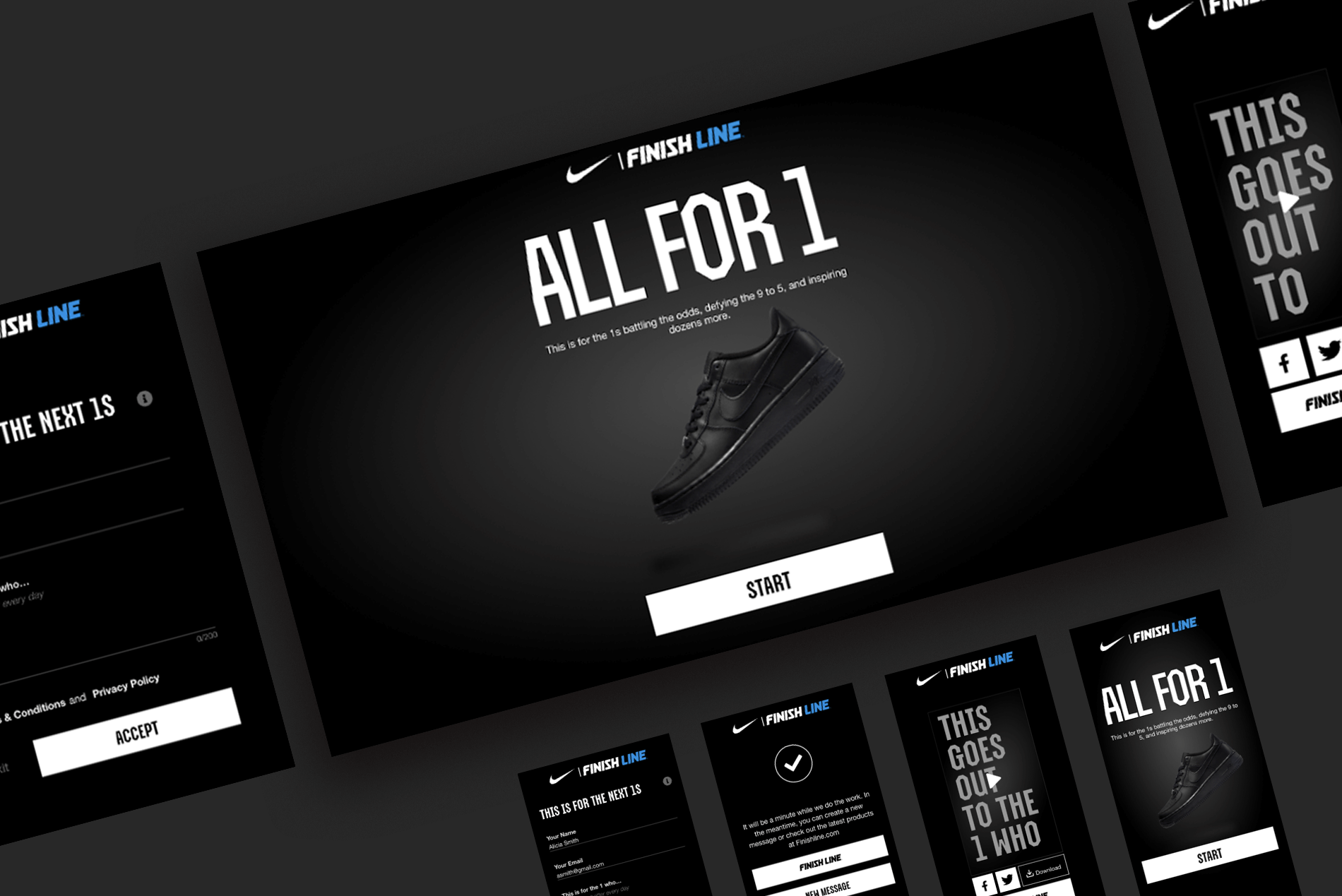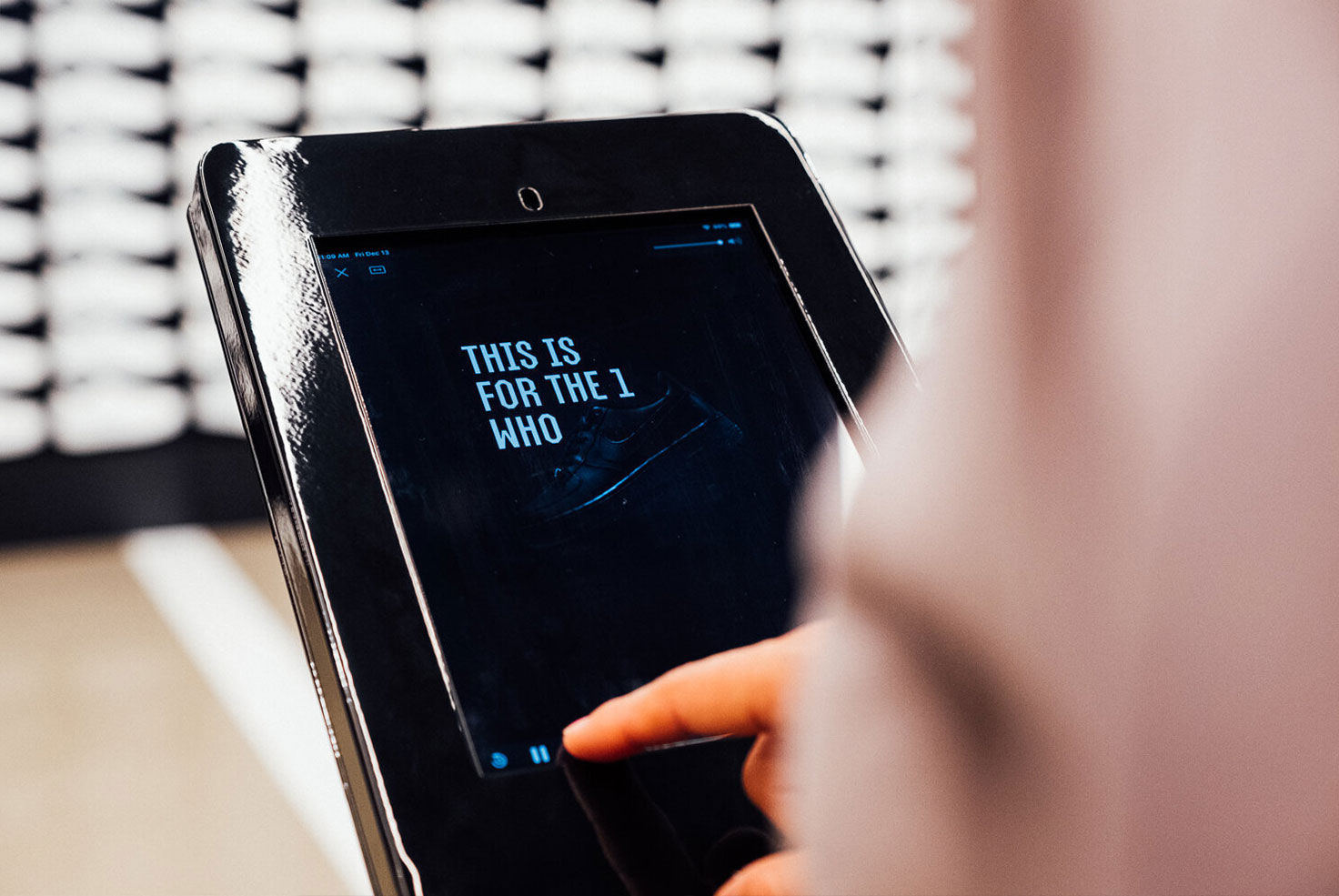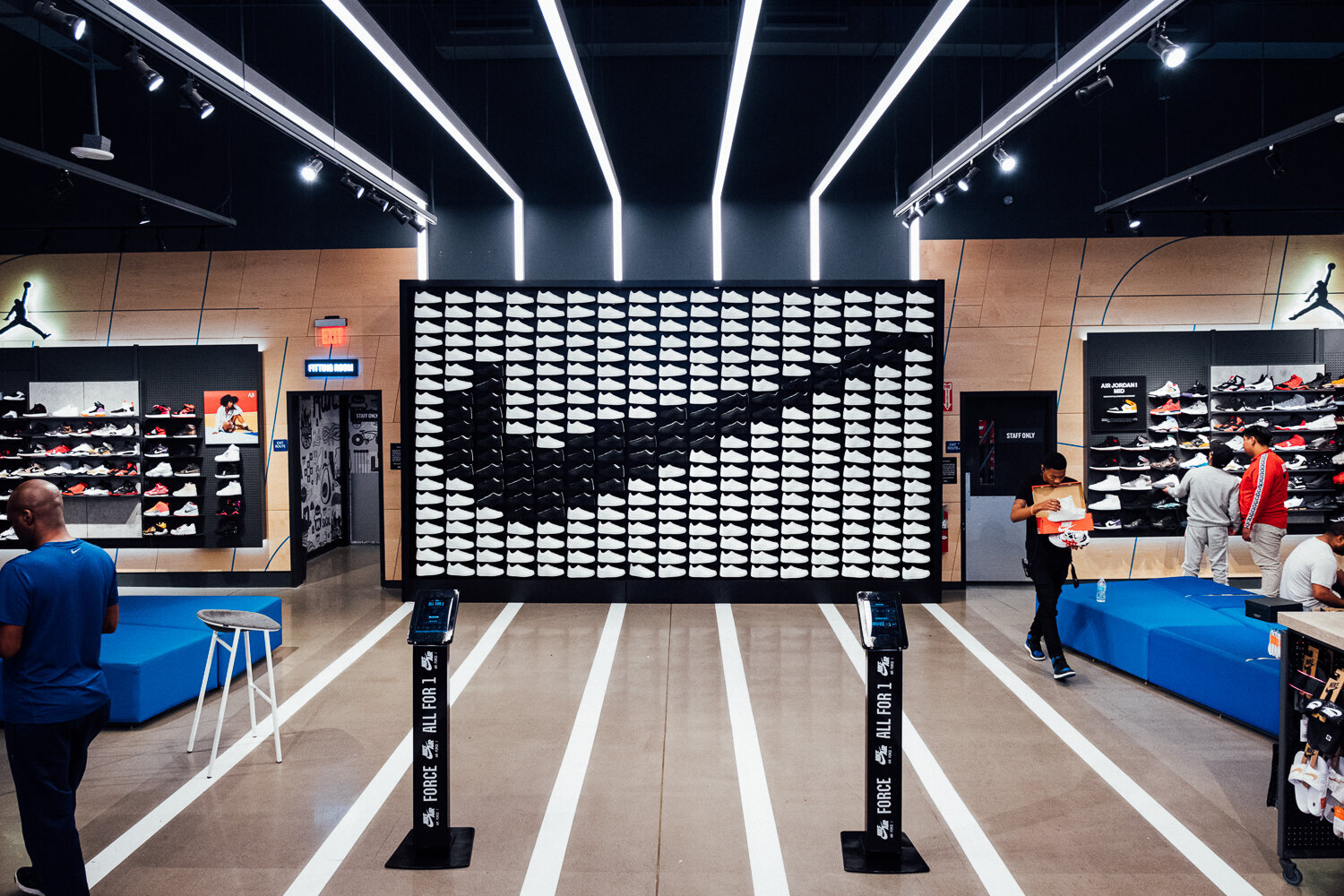ALL FOR 1
Unveiling the Dynamic Sneaker Walls of Nike AF1 x Finish Line - A Case Study in Interactive Design and Engaging Brand Messaging
Overview
As a experience designer, I was tasked with enhancing the customer experience for a unique and innovative project that aimed to revolutionize the way people buy and wear shoes. The project called the Interesting Shoe Rotation, was a collaboration between several top footwear brands and a leading online retailer.
We’re talking to a communaholic generation that’s made uplifting others a personal passion.
Politically-engaged. Globally-connected. Highly individualistic. This generation woke up woke and is changing the world in their ways.
The in-store experience was designed to be interactive, engaging, and informative. The dynamic sneaker walls and the interactive touchscreens allowed customers to learn more about the AF1s and to share their thoughts on the shoes with others. The branded merchandise also helped to create a sense of excitement and anticipation for the project.
Here are some of the benefits of the in-store experience:
- It allowed customers to interact with the products in a new and engaging way.
- It helped to create a more meaningful connection between the customer and the brand.
- It increased customer engagement and excitement for the project.
- It helped to drive sales of the AF1s.
The in-store experience was a key part of the success of the Interesting Shoe Rotation project. It helped to create a memorable and unique customer experience that kept customers coming back for more.

Challenge
The Interesting Shoe Rotation project faced several challenges in creating a memorable and unique customer experience.
These challenges included designing a seamless and user-friendly online and, in-store platform for customers to browse and purchase the shoes, providing personalized recommendations to customers based on their preferences, and creating a post-sale experience that would exceed customer expectations.
Designing a mobile-first product for an inclusive target audience. The client requested to have the most simple UI to keep the engagement and user interest to write a message to that who have been inspired from.
- Designing a seamless and user-friendly online and in-store platform.
- Providing personalized recommendations based on customer preferences.
- Exceeding customer expectations with a post-sale experience.
- Designing a mobile-first product for an inclusive target audience.
Solution
I focused on creating an exceptional end-to-end customer experience for the Interesting Shoe Rotation project. I worked closely with the development team to design a user-friendly online platform that would allow customers to easily browse and purchase shoes from multiple brands. I also developed a personalized recommendation system that would suggest shoes based on the customer’s preferences and previous purchases.
Online platform: A user-friendly online platform was designed that allowed customers to easily browse and purchase shoes from multiple brands. The platform featured a variety of filters and sorting options, as well as personalized recommendations based on the customer’s browsing history and purchase behavior.
In-store experience: The in-store experience was also enhanced with the addition of dynamic sneaker walls. These walls featured a variety of AF1s that were constantly changing based on the customer’s location and preferences. The walls were also equipped with interactive touchscreens that allowed customers to learn more about the shoes and share their thoughts on social media.
These are just a few ideas for how the in-store experience for the Interesting Shoe Rotation project could be enhanced. By using the latest technology and by focusing on personalization, retailers can create in-store experiences that are both memorable and engaging.
- They would allow customers to interact with the products in a more immersive and engaging way.
- They would help to create a more meaningful connection between the customer and the brand.
- They would increase customer engagement and excitement for the project.
- They would help to drive sales of the AF1s.
Microsite Use case:
The use case diagram captures the main functionalities/pages of the microsite. Take note that alternate flow is not captured in the use case diagram.

In-Store Use case:
The use case diagram captures the main functionalities of the physical store tablet. Take note that alternate flow is not captured in the use case diagram.

The first step in designing the solution was to create wireframes. Wireframes are low-fidelity sketches that represent the layout of the user interface. They are used to get feedback on the overall design and to identify any potential problems. Once the wireframes were approved, the next step was to create flows. Flows are high-level representations of the user journey. They show how users will interact with the product and how they will move from one screen to the next.
Finally, prototypes were created. Prototypes are interactive versions of the product that allow users to test the functionality. They are used to collect feedback on the usability of the product and to identify any potential bugs.
The following are some of the wireframes, flows, and prototypes that were created for the Interesting Shoe Rotation project:
Flows: The flows for the in-store experience showed the user journey for different types of customers. For example, one flow showed how a customer who is interested in learning more about the AF1s would interact with the product. Another flow showed how a customer who is interested in purchasing an AF1 would interact with the product.

Wireframes: The wireframes for the in-store experience showed the layout of the dynamic sneaker walls and the interactive touchscreens. They also showed how customers would interact with the products and how they would move from one screen to the next.
Prototypes: The prototypes for the in-store experience were interactive versions of the dynamic sneaker walls and the interactive touchscreens. They allowed users to test the functionality of the product and to provide feedback on the usability.
The wireframes, flows, and prototypes were used to gather feedback from customers and stakeholders. This feedback was used to improve the design of the product and to ensure that it met the needs of the target audience.

Result
The Interesting Shoe Rotation project was a resounding success, with customers raving about the exceptional customer experience. The seamless online platform and personalized recommendations helped to create a strong emotional connection between the customer and the brand, resulting in increased customer loyalty.
In addition to the positive customer feedback, the Interesting Shoe Rotation project also resulted in a significant increase in sales for the participating brands and the online retailer. The project helped to revolutionize the way people buy and wear shoes, setting a new standard for customer experience in the industry.
- The in-store sales of AF1s increased by 15% during the same period.
- The number of social media impressions for the #AF1xFL hashtag exceeded +5K.







